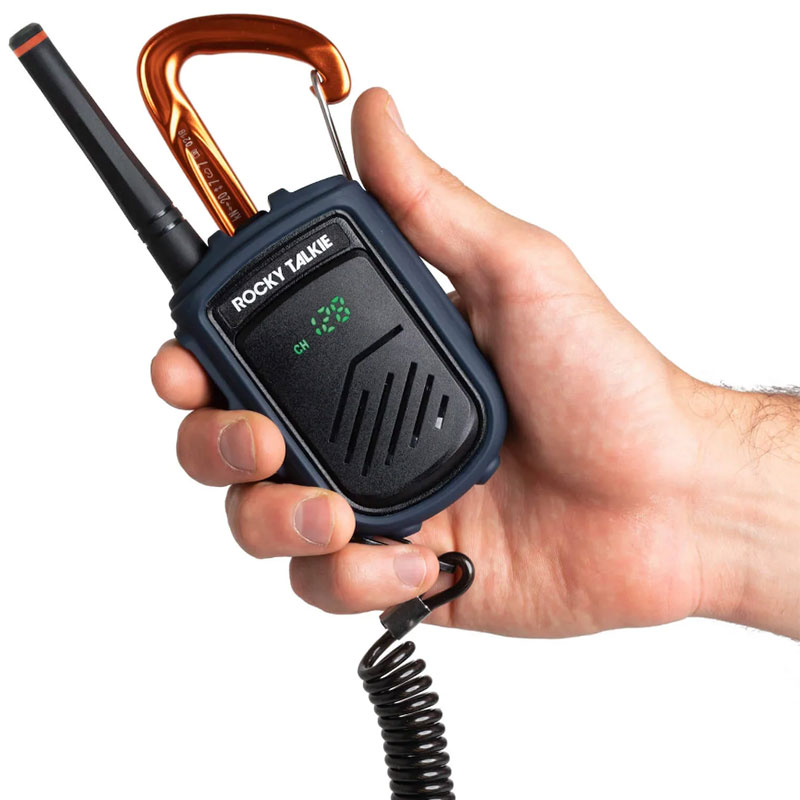 There have been a few situations in the mountains where I wish we all carried radios. The most recent was during our hike to South Lone Peak last month where our group got separated on the way up. A very qualified friend ventured off on his own. Which is fine, he totally knows what he’s doing. However, he was no where to be seen as we got to the ridge before continuing further up. Yelling did no good. Was he OK? Did anything happen? Just as another in our party went off to backtrack, he popped up on the ridge down the way.
There have been a few situations in the mountains where I wish we all carried radios. The most recent was during our hike to South Lone Peak last month where our group got separated on the way up. A very qualified friend ventured off on his own. Which is fine, he totally knows what he’s doing. However, he was no where to be seen as we got to the ridge before continuing further up. Yelling did no good. Was he OK? Did anything happen? Just as another in our party went off to backtrack, he popped up on the ridge down the way.
How much easier it would have been to just call for an update using a hand-held radio?
HAM Radios
In a different conversation some days later, another friend had asked if a HAM radio license was worth having for backcountry communication. That’s a good question which doesn’t have a short answer in my opinion.
I think a HAM radio *might* be good in a personal emergency situation… but not sure how much more effective a HAM might be over a SPOT (or even a cell phone these days) for an immediate 911 dispatch. If we’re talking about a HAM for general comm on the mountain with others, I don’t think there’s even .01% who carry one let alone any radio for that matter (me included).
I’ve had a HAM license since 2003 but have really only used it when I was part of a search and rescue team. In fact, my wife got me a new HAM radio this past Christmas and I’ve still yet to play with it or take it out hiking. From my experience, I’m not sure getting a HAM license would be worth the time and effort if the use is only casual (meaning, not for SAR support or other formal emergency response requirements).
2-Way Radios
Getting a HAM license involves a slightly extensive process. You have to pass a test that involves some pretty technical stuff about frequencies and hardware that really doesn’t appeal to your average non-tech user. If you’re in to gadgets or have a specific use in mind, you might enjoy the challenge. Otherwise, a regular 2-way might be good enough to chat with those in your group that got spread out along the trail.
Backcountry professionals have recently been talking about “wanting to see the radio join the standard beacon/shovel/probe toolkit” in the backcountry. Here’s a good article about this subject from Backcountry Magazine.
I’ve been wanting my group to add a basic 2-way to their standard equipment for some time now. Imagine getting help faster from a nearby party in the event of an injury or accident. We even have designated channels to help facilitate better backcountry communication in our area.
Wasatch Front, Utah
- Little Cottonwood Canyon/Highway 210: Channel 2, Privacy Code 10
- Big Cottonwood Canyon/Highway 190: Channel 1, Privacy Code 9
- Park City Ridgeline/Highway 224: Channel 2, Privacy Code 24
- Rescue Channel (when a rescue is underway): Channel 9, Privacy Code 11
Snoqualmie Pass, Washington
- Source and Snow Lakes Environs: 2-7
- Kendall Zone: 3-7
- Hyak: Channel 6-7
Telluride, Colorado
- Lower Bear Creek: 1-0
- Upper Bear Creek: 5-10
- Wasatch: 4-20
- Ophir Channel: 8-10
- Rescue Channel (when a rescue is underway): 9-11
Do you have channels set up where you recreate?
